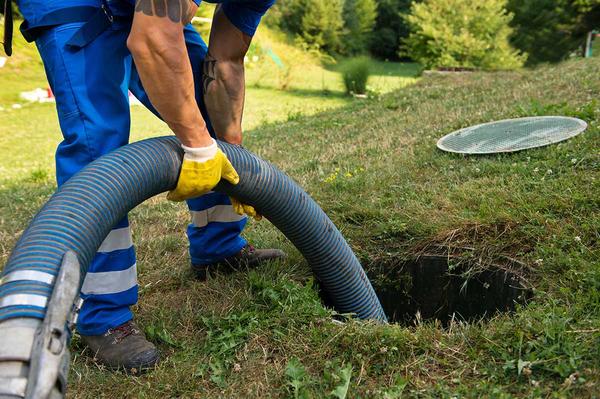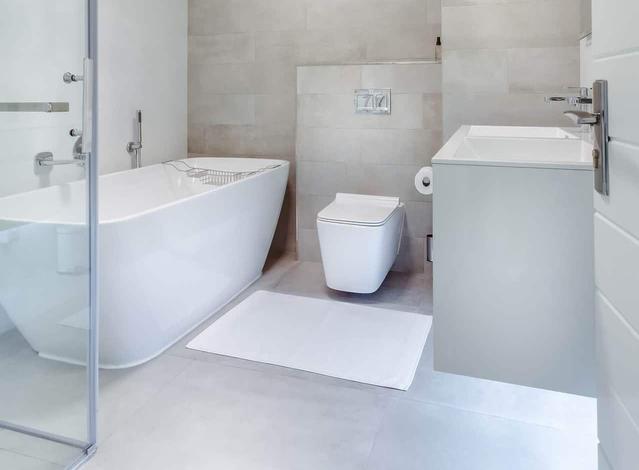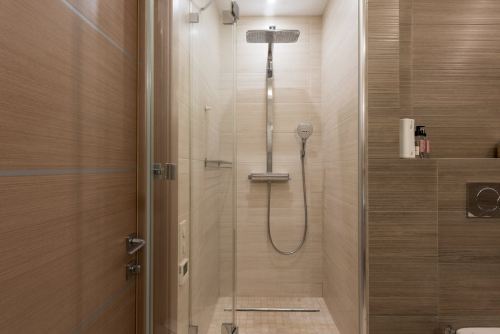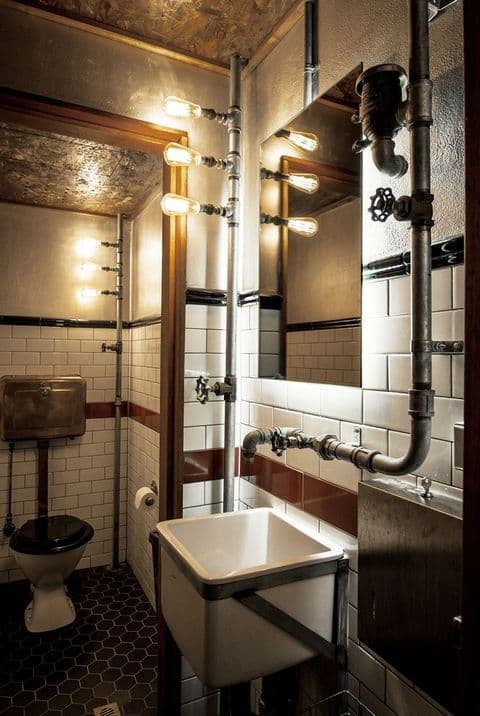How to Make Sure Your Bathroom Isn’t a Cesspool of Bacteria
Have you heard of "toilet plume"? It's a the spray of contaminated particles that erupts from the bowl when you flush. Yeah. If that's not reason enough to pay more attention to housekeeping, nothing is.
But if you think about it, toilet plume is just one of the many ways bacteria, fungus, and yeast spread and thrive in your bathroom. Consider all of the other human detritus that's not, strictly speaking, waste: Dead skin, hair, boogers, etc. And all being processed in one of the smallest rooms in your domicile.
We have only ourselves to thank for all those germs.
So I talked to two industry experts who promised to help me find out how to fight back against the bacteria. I got bathroom-germ intel (and cleaning tips!) from Tricia Holderman, CEO of Elite Facility Systems—which specializes in infection prevention and control—as well as Mai Ha, PhD and senior product development engineer at Microban, specializing in odor control and antimicrobial technologies. With their wisdom, constant vigilance, and a toilet plume containment plan, you, too, can have a clean bathroom.
Wash the Shower
“The shower is where we all deposit our old skin, germs and dirt,” says Holderman. In other words, the shower is one of the biggest offenders.
“A wide variety of bacteria, fungus, and yeast can thrive in such an environment,” says Ha. “In addition, soap scum, hard-water scaling, plus hair and skin exfoliates can stick to surfaces and gradually build up. These hard-to-remove surface contaminants can provide even more safe harbor for bacteria, fungus and yeast to grow.” This could be as severe as black mold growing in the caulk or curtains, or fungus awaiting your feet. (You don’t need to be an athlete to get athlete’s foot.)
Holderman suggests disinfecting the shower walls, basin, and curtain or door after every use with disinfecting wipes or spray to kill everything. “The next best thing is squeeging or leaving the curtain or door open, to allow for faster dry time, which also prevents fungus and mold from growing.”
Close the Toilet LidBelieve it or not, the toilet isn’t the biggest threat in your bathroom. “Most germs cannot survive long on the seat, and must be transmitted via an opening in the skin,” says Holderman. (Though Dr. Ha notes that E. coli can thrive on and around the bowl itself, so keep those Clorox wipes close by.) “The worst part is the plume emissions from the flushing.” Our worst fears=confirmed. “While closing the lid does not prevent ALL germs from escaping," she goes on. "It does a great amount. Otherwise, the plume can spread droplets up to six feet, infecting any item within that area, such a toothbrushes, razors, and combs.” And you’re putting those things in your mouth, on your freshly opened pores, and atop your head…
Scrub the Sink“The germiest part of the sink is the handle,” says Holderman. “It is always touched by dirty hands.A part of the sink often overlooked is the screen that limits the water flow.The moistness is a favorite condition for germ birth and expansion.” You can often unscrew this with a groove-joint pliers or pipe wrench—and then clean everything with vinegar or boiling water—but we’re not about to tell you how to dismantle your bathroom sink in a grooming and wellness article. Ask your landlord, or, if you’re the landlord…Google it.
Launder All Towels and BathmatsBad news! “MRSAs and staphs can last from seven days to seven months on soft surfaces,” says Holderman. Cool! “Never share towels.”



